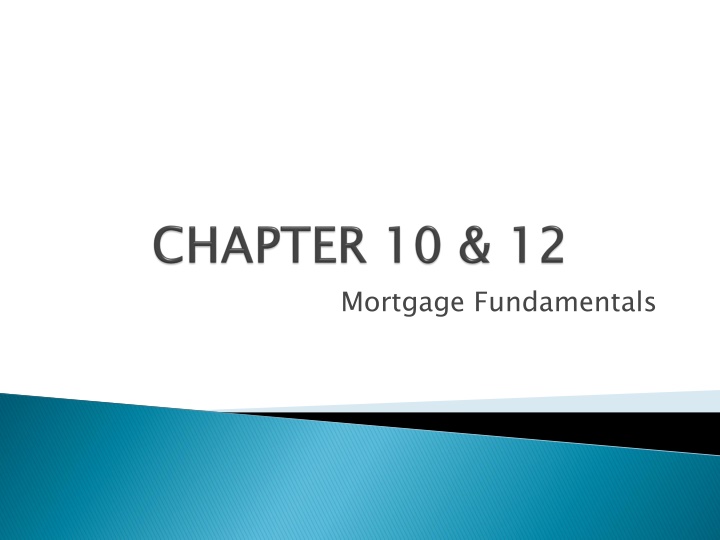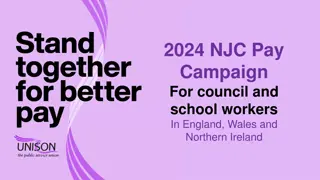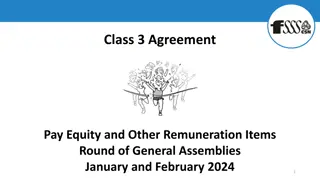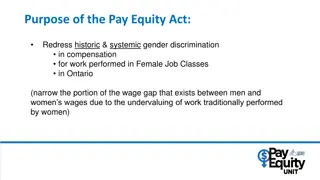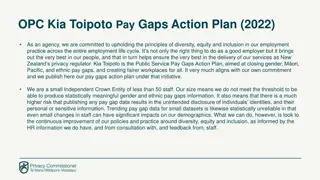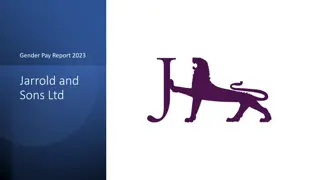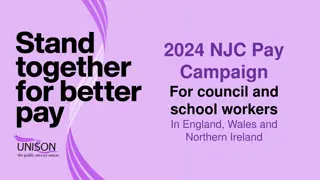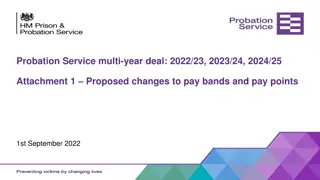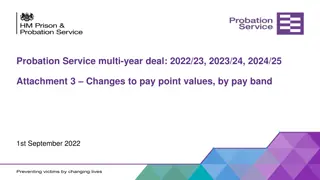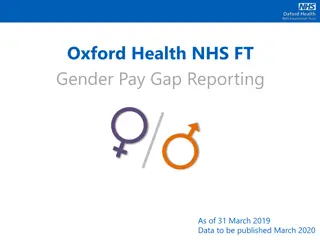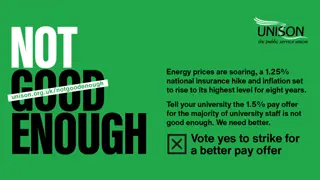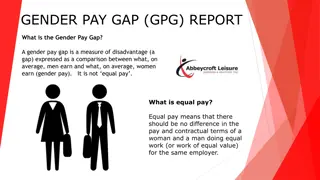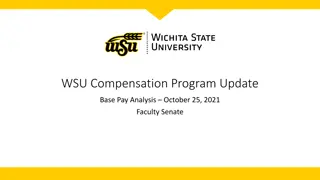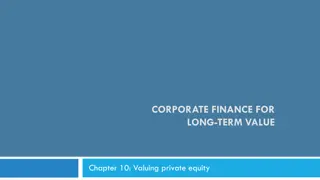Pay Equity Legislation Overview & Implementation Steps
The Pay Equity Act aims to address gender discrimination in compensation by analyzing job classes, determining gender predominance, valuing job classes, and making salary adjustments. Steps include determining job classes, assessing gender prevalence, valuing job classes, setting maximum hourly rates, comparing male and female job class compensations, and making necessary salary adjustments. The process involves determining gender predominance, job values based on qualifications and responsibilities, using salary scales, and applying regression analysis.
Download Presentation

Please find below an Image/Link to download the presentation.
The content on the website is provided AS IS for your information and personal use only. It may not be sold, licensed, or shared on other websites without obtaining consent from the author.If you encounter any issues during the download, it is possible that the publisher has removed the file from their server.
You are allowed to download the files provided on this website for personal or commercial use, subject to the condition that they are used lawfully. All files are the property of their respective owners.
The content on the website is provided AS IS for your information and personal use only. It may not be sold, licensed, or shared on other websites without obtaining consent from the author.
E N D
Presentation Transcript
A mortgage is a security that is held against a property by the lender (mortgagee) who lends money to the borrower (mortgagor) Mortgages are normally registered in the Land Registry Office Equity of Redemption is a right of the mortgagor to reclaim the mortgaged property once the mortgage has been paid
1. Legal mortgage Direct conveyance of the title deed is involved Mortgagee holds title to the property until the mortgagor pays him back 2. Equitable mortgage (mortgage on equity) Known as junior mortgage Mortgage taken against home equity line of credit i.e. against the equity in your property Does not involve conveyance of title 3. Chattel mortgage Backed up against additional security, i.e. moveable items like boats, cars or trailers or personal possessions that can be removed without affecting property (appliances, televisions, stereo, etc.)
There is an implied covenant made to lender to borrow money For instance, the borrower must pay property tax, keep property insured and maintain it If the covenant is breached, the lender may take legal action against the borrower and institute foreclosure (power of sale)
1. Power of sale (most frequent remedy) Legal right of the mortgagee to force sale of a mortgaged property without judicial proceedings Power of sale is fair because it only entitles mortgagee to get outstanding mortgage amount, and the mortgagor can keep any excess amounts from the sale after the mortgagee has been paid Bank waits 15 days after default in which it will try to negotiate with mortgagor by phone. They will also send through registered mail form 1 which is Notice of Sale under Mortgage under the Mortgages Act The lender will wait for response of borrower
If there is a power of sale clause in the mortgage agreement, the bank will wait 35 days, or else they will wait 45 days as per the statutory requirement During this period, the bank is not authorized to take any action but failure to pay at the end of this period enables bank to pursue foreclosure The property is then put on sale on the market The property are normally sold in the condition they are in If the mortgagor is able to pay the sum, offers on the property may be declared invalid by court Once property is sold, lender will take outstanding amount and all remaining equity will transfer to borrower If the amount is insufficient, lender may sue borrower under personal covenants
2. Foreclosure Foreclosure action can be taken immediately after default Mortgagor can redeem their equity within 20 days after filing an application in court The mortgagor is allowed 60 days to sell the foreclosed property and pay the mortgagee the full amount owed If the borrower fails to sell, the lender may sell the land and keep all equity recovered However, the option to sue is not available
Pre-approval mortgage adds negotiating strength Buyers can argue that they have pre-approval from a bank, which will prompt seller to work with them as opposed to other buyers Pre-approval shows that buyers are qualified to close the deal (bank will lend money) Such a buyer is like a cash buyer Buyer just needs to meet preconditions such as NOA, Credit check, T1 General All banks have their own preapproval forms, but most consist of maximum amount they can borrow and the interest rate they will get Banks confirm pre-approval after appraisal of property
It is important the salespersons read pre-approval documents carefully because: Pre-approval is not a firm contract and the pre- approving bank may reject approval even after all the conditions are met Therefore, if you do not make any offer conditional on the mortgage and the mortgage ends up getting rejected, you can get sued by the buyer who can argue that you should have had a mortgage condition in the Agreement
A mortgage commitment is not a guarantee A pre-qualification is a guarantee The bank does not have to lend the money if all the conditions are met
Banks have varying criteria for: Different types of properties Different conditions of properties If there are other mortgages on a property A higher interest rate will be charged if the risk of lending for lender is high For instance, damaged properties will require repairs before they can be sold so a bank may charge higher interest rates on mortgage loans
Bad conditions result in high interest rates: Physical detractions: Select types of siding Outdated wiring systems Lack of furnace Well on property Low water gallonage per minute Partial basement//dirt floor Deteriorating neighborhood Exterior/interior design weaknesses Legislative issues: Non-compliance with local building codes Failure to comply with zoning by-laws
Open mortgage can be paid off without penalties Closed mortgage cannot be paid off until the term expires Penalty applies if there is early payment Fixed interest mortgage has fixed interest throughout duration of mortgage Variable interest mortgage has interest rates that depend on market conditions
Conventional mortgage is a mortgage on a property where more than 20% of the purchase price was put down Under a conventional mortgage, no insurance is needed High-Ratio Mortgage is a mortgage on a property where less than 20% of the purchase price was put down High ratio means high risk This means mortgage default insurance is required Must be insured through Genworth (GE), AG or CMHC (Canadian Mortgage Housing Corporation) There is a 1-2% fee depending on the loan amount
The insurance company pays the lender immediately upon default This makes sure that the lender does not lose any money Default insurance typically protects the lender and not the borrower
Wraparound mortgages are created when two mortgages combine into a single one For instance, you have a first mortgage provided by RBC worth $150,000 at a 3% interest rate and a second mortgage provided by a private lender worth $50,000 at 17% interest Instead of paying 17% interest on the second mortgage, you combine both mortgages (or wrap around) so that you pay $200,000 at 4% interest.
A blanket mortgage is said to exist when it covers more than one property For instance, if you own one house in Markham and a cottage in Muskoka. If both properties are under one mortgage with one payment, it is a blanket mortgage Meanwhile, if 2 mortgages are made into one mortgage, it is a wraparound mortgage
Bridge loan is a short-term loan for residential purposes When you sell a property and subsequently purchase another one which has an earlier closing date than the closing for the property you are going to sell, you can acquire a bridge loan to pay for the property you want to purchase If you buy before you sell your property, you use a bridge loan to fill the gap between buying and selling your property
Gap loans are short-term loans for commercial purposes It acts like interim financing to provide funds between construction advances and obtaining permanent financing It is sought by developers in the gap period when they wish to start construction but are waiting for permanent funds to come through
Which kind of mortgage payment is most commonly used? Blended payment where the interest and principle are paid together in a single payment Mortgage payments are blended because interest and principle are not paid side-by-side What is the main source of down payment on a property? The saver s money that is in our RRSP or GIC What is a mortgage commitment? Offer to lend without any guarantee Conditional offer that depends on you providing lender with Notice of Assessment, T4 Pay Stub etc.
